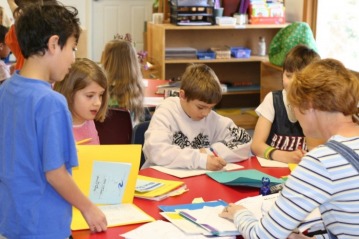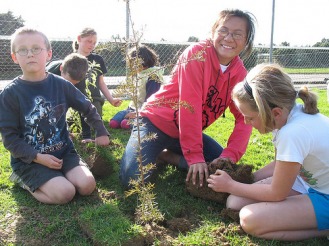Enhance Critical Literacy Through the use of Technology and Reciprocal Learning:
Literacy instruction traditionally refers to the teaching of basic literacy skills—reading, writing, listening, and speaking. However, in today's digital world, technology has contributed to an expanded understanding of literacy. Besides having basic literacy skills, 21st century students also need technology skills for communicating, analyzing, accessing information, thinking critically about messages inherent in the media, understanding data, and developing strong opinions. I believe that if students do not sufficiently learn these new skills, they will be unable to properly process information they are presented with in the future.
By integrating new educational technologies into the classroom curriculum, students can gain these necessary literacy skills AND become positive agents of change in school and in their communities.
By integrating new educational technologies into the classroom curriculum, students can gain these necessary literacy skills AND become positive agents of change in school and in their communities.

When implementing new technologies, there is no harm in involving students in the ongoing planning and implementation process. Students can help provide thoughts and opinions, as well as innovative project ideas. By including students in the process, teachers can provide a powerful context for youth to become engaged in meaningful and relevant decision-making. Teachers and students can work together to gather and discuss information, they can make meaning from what they gather, and they can share the recommendations they develop for change with fellow students and staff. This process reflects the main concept of critical literacy as well as reciprocal learning.

As students begin working with their teachers (learning and teaching one another), students will be empowered to take this method of critical thinking, decision making, and reciprocal learning outside of school and into their communities. Students can use these abilities to identify and articulate their thoughts and opinions in a way that will instigate change in adult-youth relationships. The reciprocity of communication between students and teachers will help them learn from one another. This will be a transformative process. If everyone is committed to sharing the responsibility of teaching and learning, then a redefinition of what it means to be student and teacher can take place.
In order to move forward with the vision of empowering students with new technologies and new youth-adult partnerships, then it is important that teachers trust their students. With the right resources and scaffolding, students are capable of making good decisions about how to use technology to enhance their own education. Adults should make the conscious effort to involve youth more. At the same time, we, as teachers, know what is best for our students; therefore, students need to trust their teachers. In this day and age, youth generally know more about technology than adults. There is no time better than the present to begin a partnership with our children and develop improved models of education.
